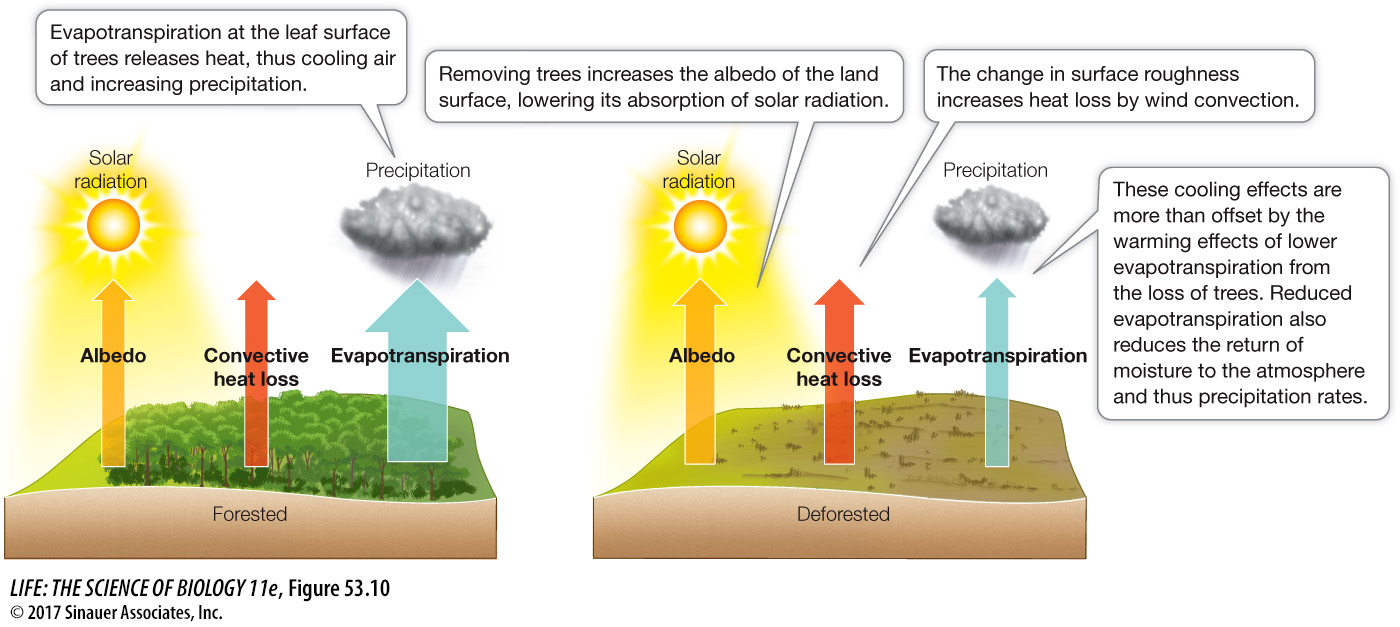Vegetation affects the local and regional physical environment, especially climate
Earth’s climate would be very different without the influence of organisms, including humans. Organisms can “engineer” the environment in multiple ways that affect the surrounding climate and physical conditions. The most obvious influence comes from vegetation, especially forests, which can have large effects on temperature and precipitation at local and even regional scales. For example, measurements of energy exchange in tropical forests that have been converted to pastureland show that forests make the climate cooler and moister (Figure 53.10). While forests absorb heat by reflecting less sunlight (reflection of solar radiation is known as the albedo effect) and decrease convective heat loss by acting as a wind screen, this is more than balanced by the cooling effect produced by evapotranspiration: the evaporative transfer of heat and water from the surfaces of plants into the atmosphere, which reduces air temperature and increases moisture. When forests are cut and replaced by vegetation such as grasses, the albedo effect and convective heat loss intensify while evapotranspiration decreases, causing overall air temperatures to rise and precipitation to decrease, creating more arid conditions. The climate changes associated with deforestation have been seen in the Amazon Basin, where massive forest clearing makes way for cattle ranching.

1151
Oceans have their own “forests”—coastal areas dominated by seaweeds such as giant kelps or seagrasses that create calmer waters, promote sedimentation, and provide habitat for fish and invertebrates. In warmer coastal waters, corals generate complex reef structures that support ecosystems rivaling rainforests in diversity. In Chapter 56 you will learn more about organisms that engineer their environment, but for now let’s turn to the final topic in this section: the effects of humans on climate and the physical environment.